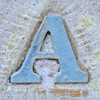Okay. I have added my creation, the word 'MATH' spelled in pictures, but I was not playing or having fun while doing it. First, I was warned by
flickr, when leaving their website, that I was entering an unfamiliar, and possibly unfriendly, Internet site and I should be very careful if I decide to
downlaod any applications. I know it's meant as a disclaimer, so they're not blamed for any viruses, etc..., but they only put those disclaimers up because it was an issue at one time. Luckily for me I did not have to download any application to spell my word. I simply created the word from pictures on f
lickr, on the Spell with flickr website, and then copied and pasted the code to my blog. I was unable to put it inside this post, but it's on my blog somewhere.
Secondly, several of the sites I went to before I chose
Spell with flickr did not make using their application very easy. I was uncomfortable on every site I experimented with except
Spell with flickr.
I see many benefits of
mashups.
Mashups seem like they could be a very good way to link two concepts together so students may expand their understanding of them. Maybe it will help the student to realize other applications of a concept they already understand fairly well, and build upon their knowledge base. Either way, the link to the real world is what teachers look for, and
mashups may be a window to look through and find it.
I have no issues sharing photos on the Internet, but I prefer to share them with only close friends and family members. None of my photos are of exceptional quality, nor contain exceptional content.







